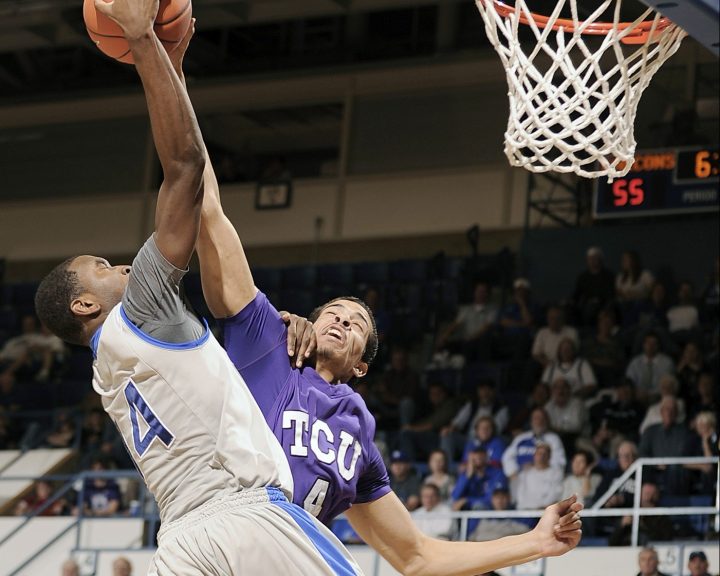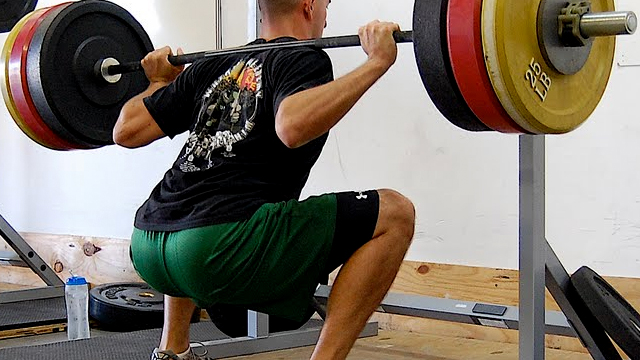This is a post that is focused on the short-term. Many junior coaches want to jump into designing elaborate, long-term strength and conditioning programs for their athletes. Many junior coaches get extremely frustrated because these beautiful multi-year programs usually have to be scrapped a few weeks in because the athletes aren’t spreadsheets. This post has some thoughts on short-term program design, which is something that has to be mastered before looking at the long-term. The idea is to be able to put programs together that integrate all the different things that athletes do.
There are four things to carefully consider prior to program design:
- The time of the year
- Prioritize things
- Plan your first priority
- Ensure that the tools complement
The time of year
The time of the year has a major impact on program design. Simply put, once an athlete is in-season they have less time to train thanks to competition, travel, and increased sport-specific practices. During this time of year the strength and conditioning coach has to narrow their focus and compromise some of their programming “rules.” For example, complexing strength and power exercises, or using the same drills to train both speed and agility.
On the other hand, the off-season allows for more time to train and allows for a broader focus. Having said that, there is still not infinite time to train no matter what level of development you work with. Even elite athletes have a finite amount of time to train and a finite ability to recover from training. All of this brings us to the second point.
Prioritize things
The amount of things that we can work on is overwhelming. Here’s a short list:
- Hypertrophy
- Strength
- Power
- Acceleration
- Maximal speed
- Metabolic conditioning
- Mobility
- Aerobic conditioning
- Agility
- Sport skills
- Sport strategy/tactics
Trying to sit down and plan out everything above is going to an exercise in frustration, it’s also not practical because in the real world our athletes don’t need everything equally.
Based upon the athlete’s needs and the time of year, a coach should take the time to sit down and prioritize the athlete’s training needs. Note that this must be done continually. As the athlete adapts to training their needs are going to shift, this mesocycle it might be strength but the next mesocycle it might be conditioning. For example, below is a list of priorities (in order) for the early off-season for a basketball player:
- Hypertrophy
- Strength
- Power
- Metabolic conditioning
- Sport skills
- Acceleration/agility
- Everything else
However, as the athlete above moves into the in-season, those priorities are going to change:
- Sport strategy/tactics
- Sport skills
- Agility
- Power
- Strength
- Acceleration
- Everything else
Once I’ve done that, I find it helpful to chart out the priorities in terms of the volume and intensity trends over the period of time that we’re planning for. The table below shows an example of this for the off-season basketball player mentioned above. Note that each column has two letters, the first represents the volume and the second represents the intensity. L is low, M is moderate, H is high.
| Week One | Week Two | Week Three | Week Four | |
| Hypertrophy | M/L | M/M | H/M | M/L |
| Strength | L/M | L/M | L/H | L/M |
| Power | L/M | L/M | L/M | L/M |
| Conditioning | M/L | M/M | M/M | M/M |
| Sport skills | M/L | M/M | M/M | M/M |
| Acceleration/agility | L/H | L/H | L/H | L/H |
Having a sense of where you are going allows you to make a more effective plan.
Plan your first priority
Once you have a sense of where you are going, it’s time to plan your first priority. In our example above, it’s hypertrophy. In the early off-season, we might only train hypertrophy twice a week, but make those total body sessions. For example, on Wednesday and Friday. I’ll explain later why I’m selecting those particular days. Keep in mind, basketball players are not bodybuilders, i.e. we’re not doing thirty sets per bodypart. This kind of hypertrophy workout will probably focus on supersets so that we can have several athletes exercising at one time. With that in mind, Wednesday might look like:
SS (Superset): Dumbbell bench press and Lunges
SS: Dips and Split squats
SS: Pull-ups and Good mornings
SS: Dumbbell military press and Reverse hyperextensions
SS: Biceps and triceps
Friday might look like:
SS: Incline press and Front squats
SS: Dumbbell rows and Step-ups
SS: Prone kettlebell rows and Seated good mornings
SS: Kettlebell press and Back raises
SS: Biceps and triceps
Going along with the volume/intensity theme mentioned in the table above, week one might look like 3×15-20, week two like 3×12-15, week three like 3×6-10, week four like 3×15-20.
Ensure that the tools complement
Training tools should complement each other, not compete. This means that they are organized to train similar qualities and energy systems. It is also done in a manner to allow for recovery. For example, if we do heavy squats today, sprints tomorrow, and lunges the next day then our legs never get a chance to recover.
Using our off-season example, we know we’re training hypertrophy on Wednesday and Friday. This means sets of 10-20 reps and little recovery between each session. This would link up well with metabolic conditioning sessions. Strength, power, and acceleration all train similar energy systems and all require short, all-out efforts. Sport skills, on the other hand, depend on what is being trained.
The table below shows the planning for each priority. We start with hypertrophy, move to strength, then power, then conditioning, then sport skills, then acceleration/agility.
| Day One | Day Two | Day Three | Day Four | Day Five | Day Six | |
| Hypert. | X | X | ||||
| Strength | X | |||||
| Power | X | |||||
| Conditioning | X | X | ||||
| Sport Skills | X | X | X | X | ||
| Accel/agility | X |
At this point in the year; strength, power, acceleration, and agility don’t respond well to excessive volumes so they are only trained once a week. Hypertrophy, conditioning, and sport skills all require greater training volumes, so they are trained more than once a week.
From this point, it’s just a matter of writing the workouts! Taking a little time first, before writing the workouts, can go a long way to making programs more effective.



